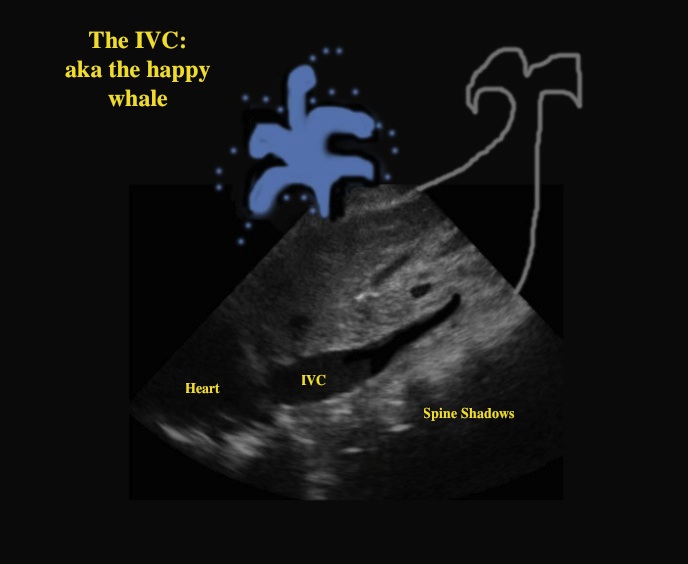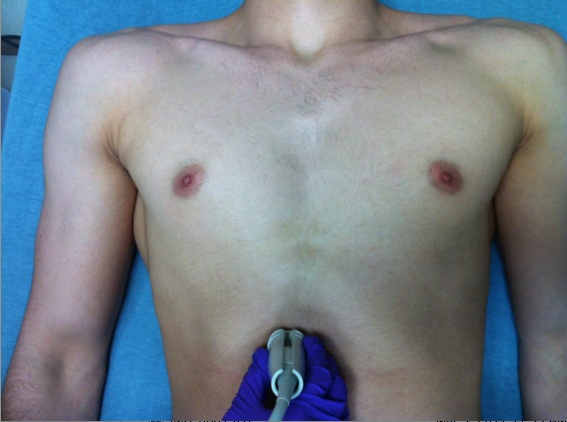Images of IVC while evaluating a patient who presented with a CHF exacerbation.
Much of medicine is pattern recognition, and this is especially true of ultrasound. As we image patients, patterns emerge in the anatomy that can help us to more rapidly identify what we see on the screen. The IVC when imaged in the long axis often looks like a smiling whale. To get this view place the phased array, or curvilinear probe subxiphoid, with the indicator, pointed towards the head.
Slide the probe towards the patient's right and angle slightly towards the heart. This may require some adjustments (fanning the probe left or right, angling more into the chest, or more towards the abdomen) to get a perfect view. The IVC can sometimes be confused with the aorta or the gallbladder, so its important to confirm that what you are looking at is truly the IVC.
Key features on the ultrasound to help us correctly identify the IVC are:
- Hepatic veins will drain into it
- It drains into the right atrium
- It travels through the liver, not below it
- It is thin-walled
- It may or may not resemble the mouth of a whale


Date: January 2012
Author: Dr. Kemberly Gardner

